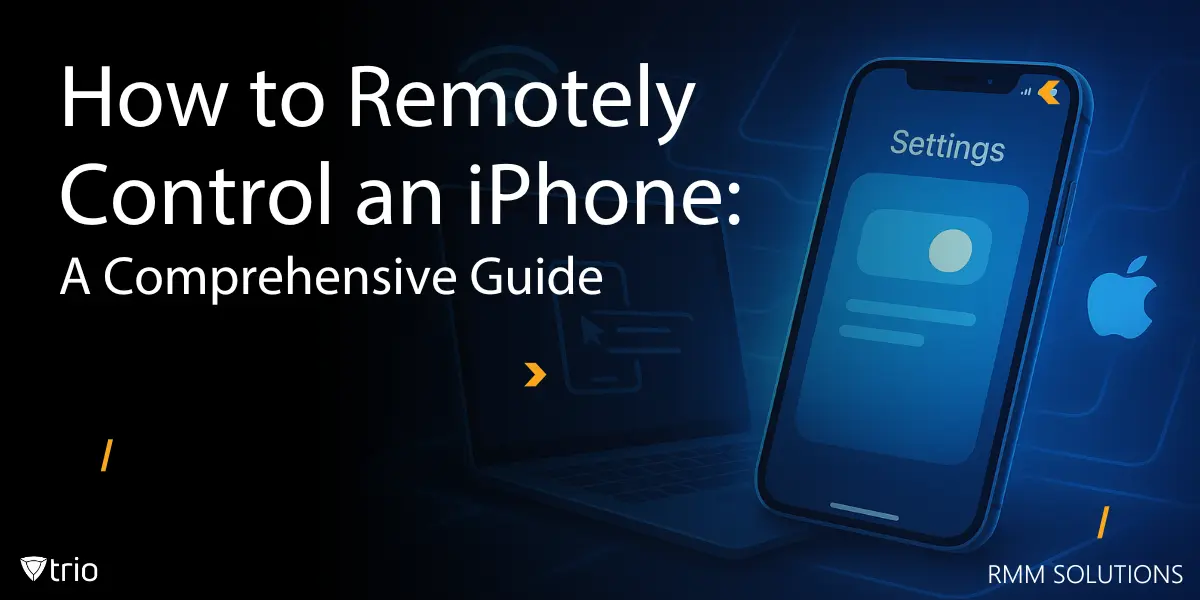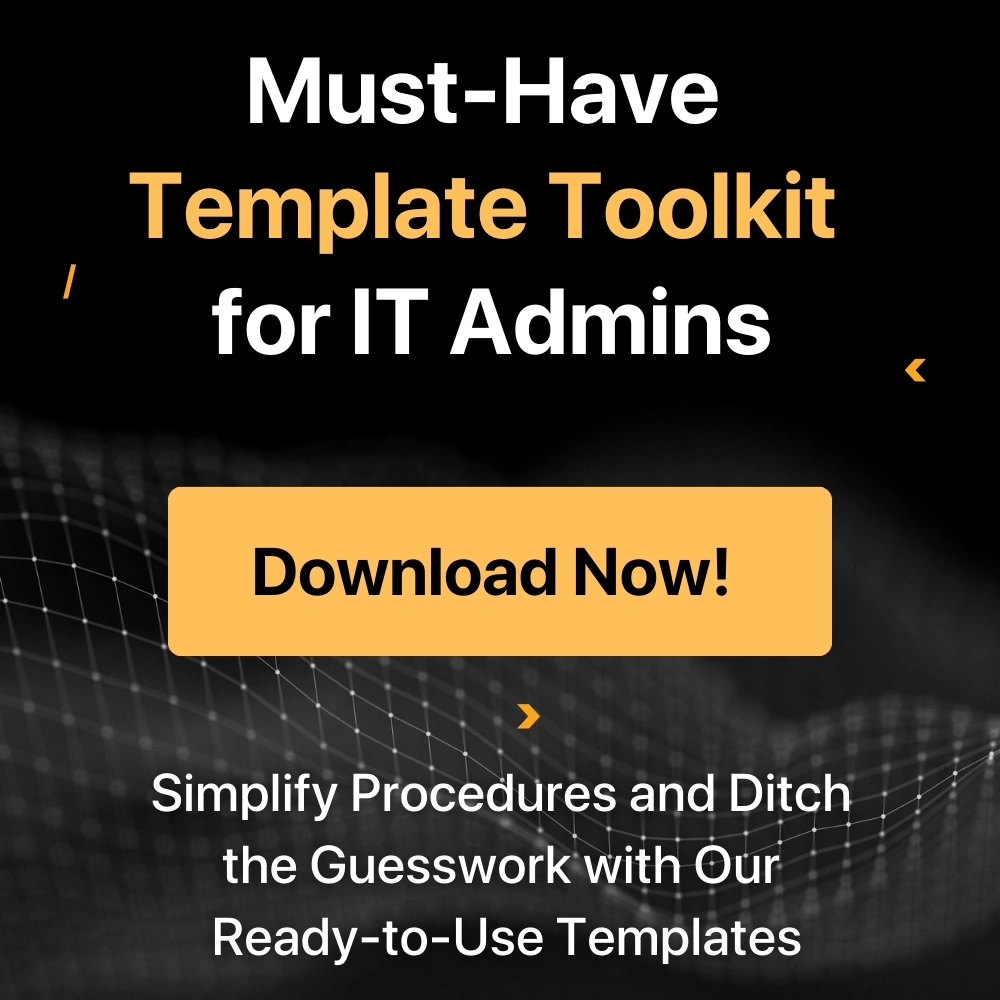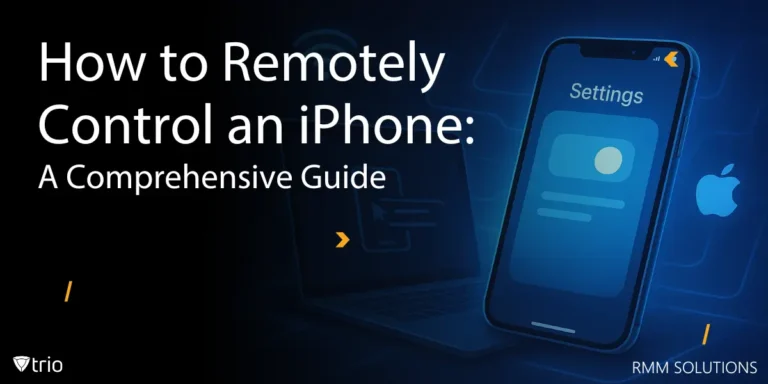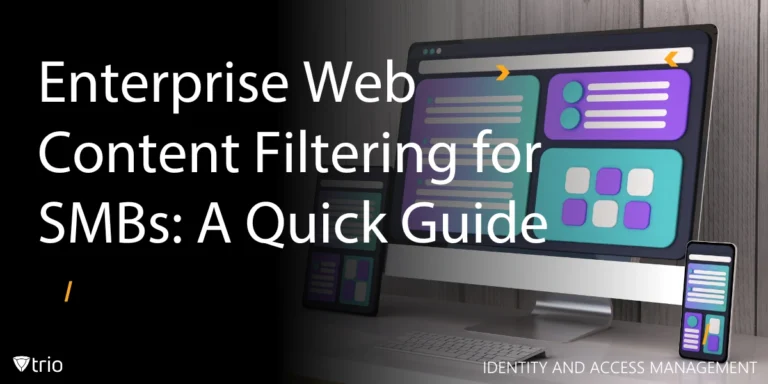In today’s fast-paced, hybrid work environment, managing a fleet of mobile devices is a critical task for IT administrators, especially for small and medium-sized businesses (SMBs) with limited resources. iPhones, with their widespread use in corporate settings, present unique challenges and opportunities for secure and efficient management. The ability to remotely control iPhones is a cornerstone of modern Mobile Device Management (MDM) and Remote Monitoring and Management (RMM) solutions, enabling IT admins to maintain security, ensure compliance, and streamline operations without physical access to devices. This blog post explores the various methods to remotely control an iPhone, with a focus on how Trio empowers IT admins at SMBs to achieve enterprise-grade control with simplicity and efficiency.
Why Remote Control of iPhones Matters for SMBs
For IT admins at SMBs, managing iPhones remotely is not just a convenience—it’s a necessity. With employees working from home, in the field, or across multiple locations, ensuring that devices remain secure, compliant, and functional is a top priority. Remote control capabilities allow IT teams to:
- Enhance Security: Lock or wipe lost or stolen devices to prevent data breaches.
- Streamline Operations: Configure settings, deploy apps, and troubleshoot issues without physical access.
- Ensure Compliance: Enforce policies to meet standards like HIPAA, GDPR, or SOC 2.
- Boost Productivity: Minimize downtime by resolving issues remotely and automating repetitive tasks.
Why Full Remote Control Is Limited on iOS
Apple’s iOS is renowned for its robust security and privacy features, which prioritize user control and data protection. However, these same features impose limitations on full remote control capabilities compared to other platforms like Android devices or PCs running Windows. For instance, iOS does not allow third-party apps or RMM solutions to directly control an iPhone’s screen or perform actions like tapping or swiping, as this could compromise user privacy. Instead, remote access on iOS is restricted to specific functions like configuration management, app deployment, locking, wiping, or enabling Managed Lost Mode. Features like screen mirroring or real-time remote control (e.g., via FaceTime or accessibility tools) require explicit user consent and are limited to supervised devices or specific use cases. For IT admins at SMBs, this means relying on RMM solutions like Trio to maximize control within Apple’s boundaries, using tools like configuration profiles, remote commands, and Apple Business Manager to achieve effective management without overstepping iOS restrictions. The same restrictions usually apply regarding remote access for Macs.
Trio, designed specifically for SMBs, simplifies these tasks by offering a cloud-based, intuitive platform that supports iOS, Android, Windows, and macOS devices. Let’s dive into the methods IT admins can use to remotely control iPhones, including how Trio makes the process seamless.
5 Methods to Remotely Control an iPhone
There are several approaches to remotely controlling an iPhone, each suited to different use cases and organizational needs. Below, we outline the primary methods, with a focus on their application in an RMM context and how Trio implements them.
1. Apple Business Manager (ABM) with MDM Enrollment
Apple Business Manager (ABM) is a powerful tool that integrates with MDM solutions to enable automated, remote management of iPhones. ABM allows IT admins to enroll devices into an MDM/RMM solution automatically, streamlining the setup process and enabling remote control from day one.
How It Works:
- Device Enrollment Program (DEP): Part of ABM, DEP enables zero-touch enrollment. When an iPhone is purchased through Apple or an authorized reseller, it can be pre-configured to enroll in your MDM solution upon activation. This ensures that devices are managed from the moment they’re powered on.
- Configuration Profiles: IT admins can push configuration profiles to iPhones, setting up Wi-Fi, VPN, email, and security policies remotely. These profiles can also restrict features like camera use or app installations.
- Remote Commands: Once enrolled, admins can send commands to lock, wipe, or locate devices using the MDM dashboard.
2. Remote Locking and Wiping
One of the most critical remote control features is the ability to lock or wipe an iPhone to protect sensitive data. This is especially important for SMBs handling customer data or operating in regulated industries.
How It Works:
- Remote Lock: IT admins can lock an iPhone remotely, preventing unauthorized access. Apple’s Managed Lost Mode, supported by MDM solutions, locks the device and displays a customizable message, such as contact information for returning the device.
- Remote Wipe: In cases of theft or when an employee leaves, admins can erase all data on the iPhone, restoring it to factory settings. This can be done via the MDM console or, if iCloud is enabled, through Find My iPhone.
- Compliance Enforcement: Remote locking and wiping ensure compliance with standards like PCI DSS, which require robust data protection measures.
3. App and Content Management
Controlling apps and content on iPhones is essential for maintaining productivity and security. MDM/RMM solutions allow IT admins to remotely deploy, update, and remove apps, as well as restrict access to certain content.
How It Works:
- App Distribution: Push App Store or enterprise apps to iPhones without user intervention. Admins can also block unauthorized apps via whitelisting or blacklisting.
- Content Restrictions: Restrict access to specific websites, media, or features (e.g., disabling the camera for sensitive environments).
- Silent Updates: Update apps and iOS versions remotely to ensure devices remain secure and up-to-date.
4. Remote Support for iPhones
IT admins often need to troubleshoot iPhone issues remotely, especially for remote or field-based employees. MDM/RMM solutions provide tools to view device status, diagnose problems, and resolve issues without physical access.
How It Works:
- Screen Viewing: Some MDM solutions allow admins to view an iPhone’s screen remotely to diagnose issues.
- Remote Commands: Send commands to restart, clear app data, or update settings.
- Analytics and Reporting: Monitor device health, battery levels, and compliance status in real-time.
5. BYOD and User Enrollment
Bring Your Own Device (BYOD) policies are common in SMBs due to their cost savings and flexibility. However, managing personal iPhones securely requires careful configuration to balance user privacy and corporate security.
How It Works:
- User Enrollment: Employees enroll their personal iPhones in the MDM solution via a link, QR code, or email invitation. This creates a managed work profile separate from personal data.
- Policy Application: Apply security policies, such as encryption or app restrictions, to the work profile without affecting personal data.
- Remote Management: Admins can lock or wipe the work profile without impacting personal data.

Setup & Requirements
To enable remote control features on iPhones, IT admins must meet specific setup steps and requirements to ensure compatibility and compliance. Below is a checklist of key requirements and configurations:
- iOS Version:
- Devices must run iOS 18 or later to support advanced remote management features, such as FaceTime-based screen sharing or accessibility-driven controls for troubleshooting.
- Permissions Needed:
- Screen Recording: Enable to allow MDM solutions to capture device activity for diagnostics or remote support.
- Accessibility Access: Configure to support features like VoiceOver or Guided Access, essential for restricted environments or kiosk mode.
- FaceTime and Camera: Grant access for remote support via video calls, enabling visual troubleshooting when needed.
- MDM Configuration:
- Use Apple Business Manager (ABM) to push configuration profiles that automatically enforce these permissions during device enrollment.
- For supervised devices, apply settings without user intervention to streamline setup.
- For BYOD devices, ensure user consent is obtained to maintain privacy while applying work-related policies.
Why Choose Trio for Remote iPhone Control?
Trio stands out as an ideal solution for SMBs due to its focus on simplicity, affordability, and enterprise-grade features. Here’s why IT admins at SMBs should consider Trio:
- Unified Platform: Manage iOS, Android, Windows, and macOS devices from a single, intuitive dashboard.
- Automation: Save time with automated enrollment, policy enforcement, and updates, reducing manual tasks by up to 60%.
- Compliance Made Easy: Use prebuilt templates to enforce HIPAA, GDPR, SOC 2, and CIS standards with one-click deployment.
- Scalability: Trio supports unlimited devices under a transparent pricing model, making it cost-effective for growing SMBs.
- MDM Remote View of iPhones: Monitor device health, compliance, and security status in real-time, with actionable insights to prevent issues.
Trio’s free trial allows IT admins to test these features and see how they streamline iPhone management.
Conclusion
Remotely controlling iPhones is a critical capability for IT admins at SMBs, enabling them to secure devices, ensure compliance, and boost productivity in a hybrid work environment. With methods like ABM enrollment, remote locking and wiping, app management, troubleshooting, and BYOD support, MDM solutions like Trio provide a comprehensive toolkit for managing iPhones efficiently. Trio stands out for its ease of use, automation, and affordability, making it an ideal choice for SMBs with limited IT resources.
Ready to revolutionize your iPhone management? Sign up for a free trial of Trio today and experience enterprise-grade control tailored for SMBs. You can also check out Trio’s free demo to experience its features hands-on today!
Frequently Asked Questions
No. Due to Apple’s strict privacy policies, full remote control (mouse/keyboard input) is blocked. However, you can:
- View screens via MDM solutions if enabled
- Use FaceTime screen sharing (requires user approval)
- Send remote commands (lock/wipe/push apps) through MDM like Trio
With Trio’s MDM, you can:
- Check real-time device logs
- Push diagnostic profiles
- Initiate automated fixes (e.g., reset network settings)
- Guide users via in-app chat with screenshots
Trio outperforms for SMBs by offering:
- Cloud-based management (no Mac workstation required)
- Cross-platform support (iOS + Android/Windows/macOS)
- Automated compliance (HIPAA/GDPR templates)
No, but legal alternatives exist:
- Guided Access Mode: Lock users into one app (kiosk mode)
- Apple Business Manager: For supervised devices only
- User-assisted control: Share screen via Zoom/FaceTime
Get Ahead of the Curve
Every organization today needs a solution to automate time-consuming tasks and strengthen security.
Without the right tools, manual processes drain resources and leave gaps in protection. Trio MDM is designed to solve this problem, automating key tasks, boosting security, and ensuring compliance with ease.
Don't let inefficiencies hold you back. Learn how Trio MDM can revolutionize your IT operations or request a free trial today!





